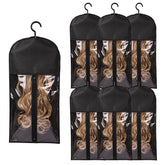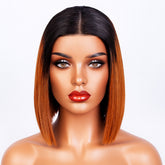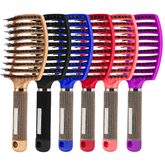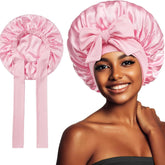Box Bob for Thin Hair: Add Volume, Shape and Effortless Style

The box bob — a clean, slightly squared take on the classic bob — has been celebrated this year for its ability to make finer hair appear fuller and more structured. For readers with limp or thinning hair, the cut’s emphasis on a defined perimeter and controlled weight can deliver immediate visual density and a polished, modern silhouette. This guide explains why the box bob works for thin strands and how to approach the cut, styling and upkeep so you get body that lasts beyond the salon chair.
Why the box bob suits thin hair
The box bob’s strength lies in its geometry. Unlike heavily layered bobs that remove weight and can emphasise sparseness, a box bob keeps a clean line around the ends. That blunt edge reflects light uniformly, creating the perception of thicker hair. Key benefits include:
- Visible density at the perimeter — the straight-edge finish gives hair a clean, full-looking silhouette.
- Controlled movement — minimal internal layering reduces wispy ends that can make hair look thinner.
- Versatility — the shape can be cropped at jaw-level or left slightly longer to flatter different face shapes.
How to work with your stylist
Conversation is everything. Ask your stylist to focus on three things: the correct length for your face, a slight graduation (if needed) to encourage volume at the crown, and a precisely executed blunt finish. When you book, consider these pointers to get a result tailored to finer hair:
- Bring clear photos of the box bob variation you like — subtly different lengths and angles change how weight sits.
- Discuss how much daily styling you want to do; a sharper, jaw-length bob often requires more frequent styling than a relaxed, collarbone version.
- Ask about texturising only at the very ends (not through the mid-lengths), so volume isn’t sacrificed for movement.
At-home styling for instant volume
Once you have the cut, styling optimises the shape and adds long-lasting body. The following routine is simple, quick and tailored for fine hair:
- Start with a lightweight volumising shampoo and a conditioner applied only to mid-lengths and ends to avoid weighing roots down.
- Towel-blot gently and apply a root-lifting mousse or spray while hair is damp; focus product at the crown and roots.
- Blow-dry with your head upside down or use a round brush to lift at the roots; aim a cool shot at the root as you finish to set volume.
- For texture and separation, use a small amount of lightweight texturising spray or cream on the ends — avoid heavy oils near the cut to preserve the blunt line.
- A fine-tooth comb or narrow paddle brush helps maintain the boxy silhouette without flattening the crown.
Maintenance: trims, tools and products
Because the box bob relies on a crisp edge, regular trims are the easiest way to keep the illusion of thickness. Book a tidy-up every 6–8 weeks. When it comes to tools and products, choose options that protect and build volume without residue:
- Heat protectant spray before any hot styling to prevent breakage that can fray the ends.
- Low- to medium-heat settings on styling tools; fine hair can be fragile, so avoid excessive heat exposure.
- Invest in a boar-bristle or mixed-fibre brush to gently distribute natural oils from root to tip, keeping the hair looking healthy rather than greasy.
For those who prefer minimal daily fuss, speak to your stylist about a softer graduation at the back — this preserves the boxy feel but relaxes the maintenance demand. Conversely, if you love a polished, editorial finish, a sharper jawline bob will deliver that instant, striking density every time you style.
Styling variations and who should be cautious
The box bob is adaptable. Consider these subtle variations based on personal preference and hair texture:
- Soft box bob: slightly rounded ends for a forgiving, lived-in look.
- Chin-length box bob: maximises the sense of fullness around the jawline, ideal for fine hair that needs perimeter weight.
- Longer box bob (lob): keeps some length while using the same blunt principles to boost body.
Thin hair with significant breakage or uneven density may need a short period of reconstruction (conditioning treatments, protein balance) before committing to a blunt perimeter — otherwise the edges can appear patchy. Discuss any scalp or hair concerns with your stylist so they can adapt the shape accordingly.
Takeaway
The box bob is a practical and flattering option for thinner hair because it uses shape to create the appearance of volume. A precise cut, thoughtful at-home routine and sensible maintenance will keep the silhouette looking full and modern. Whether you favour a sharp, editorial line or a softer boxed finish, work with your stylist to match the length and structure to your lifestyle and face shape for the best long-term results.
Learn More: Explore detailed haircare routines and styling tips at Hairporium Guides.







